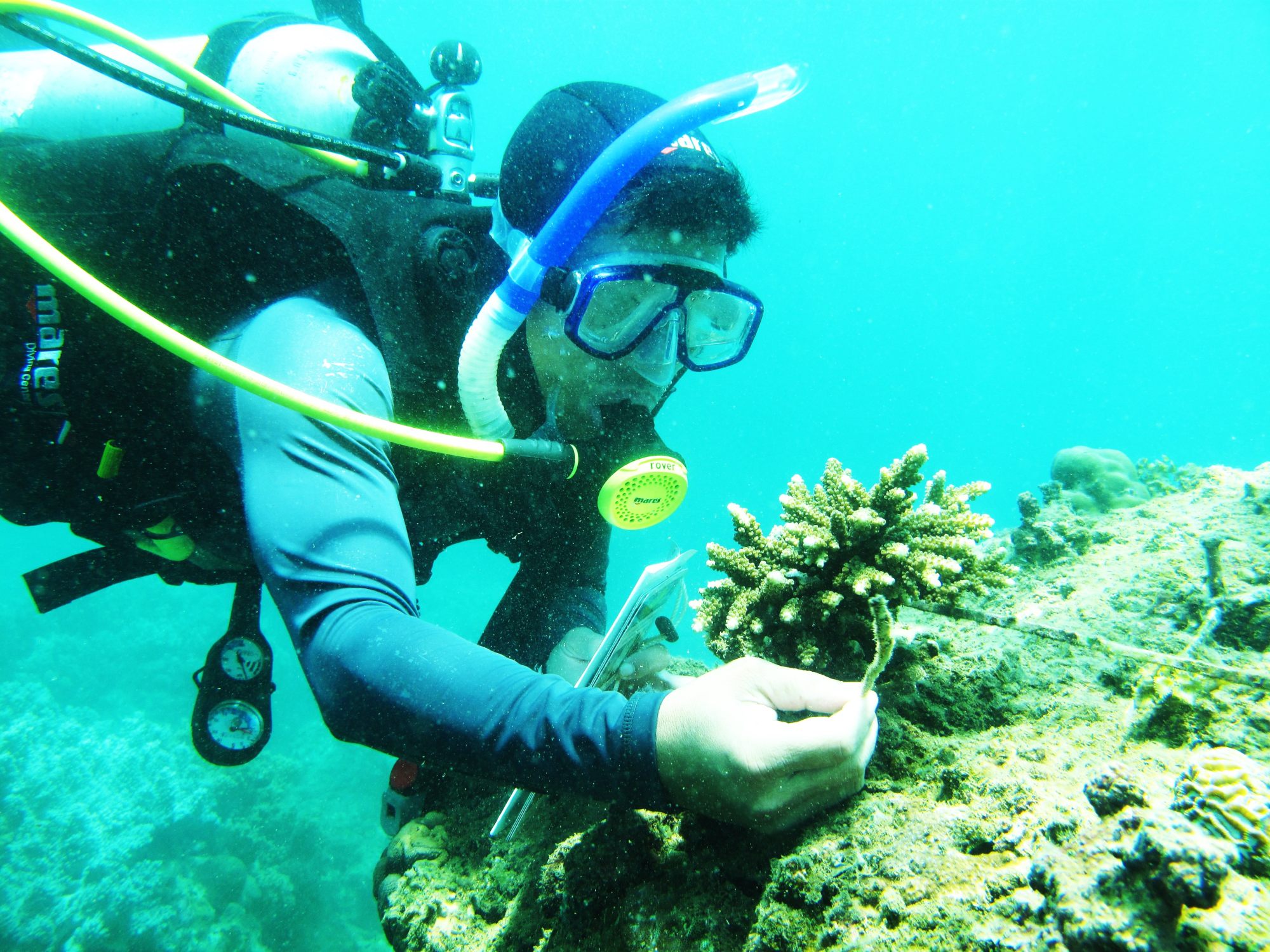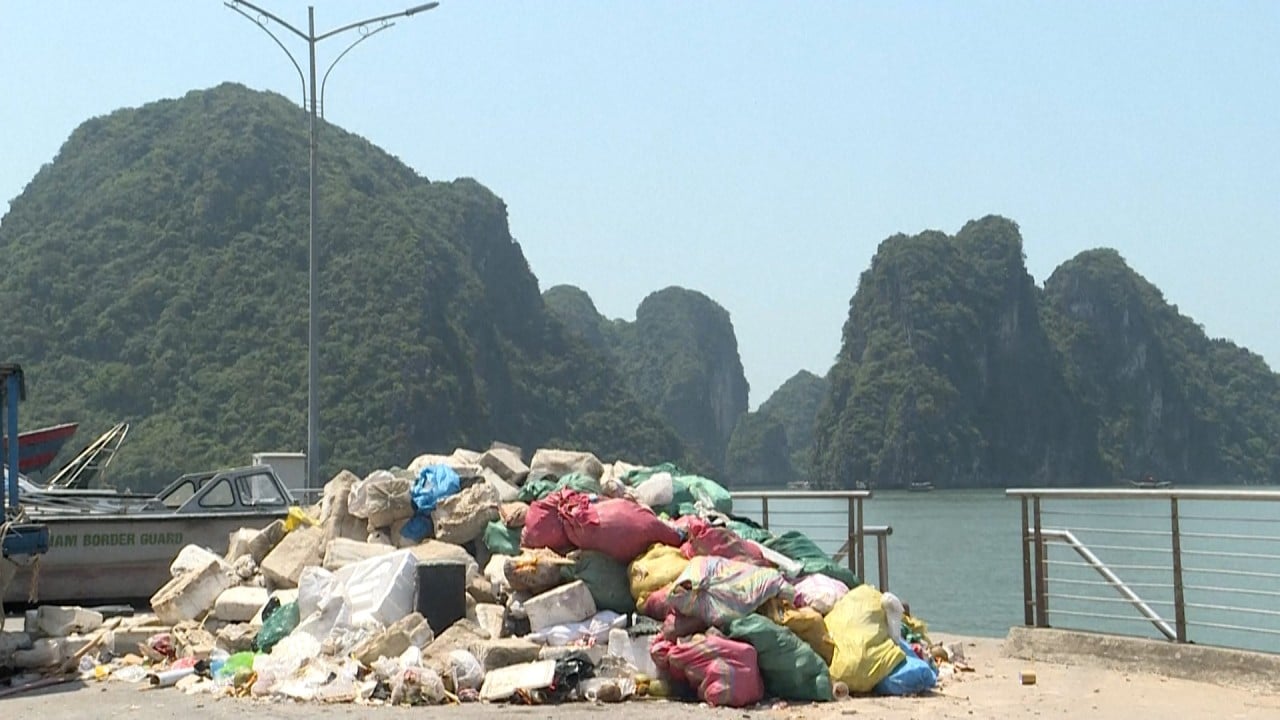A short boat ride away, Cu Lao Cham Island is seeking to learn from the perils of popularity enjoyed – and endured – by Hoi An, with an ecological draw card that ecologists say only works if tourist numbers and activities are managed sustainably.
The island also received a Unesco endorsement as a biosphere site in 2009, as part of a loop linking its pristine beaches, coral dive spots and sedate resorts to Hoi An on the mainland.
There are 277 species of coral, 250 fish, crustaceans and 97 types of molluscs flourishing around the island, a feat of conservation made possible by the buy-in of locals, who have cleaned up plastic pollution and got serious about overfishing in the blue waters.
“It was not easy to get the fishers to agree to stop fishing in the coral reef, and accept zones for sustainable fisheries,” environmental scientist Le Ngoc Thao, chief of the island’s Marine Protection Agency (MPA), told This Week in Asia.
“We had to convince them they could get a much better income, if they took the scuba-divers to see a pristine reef brimming with fish.”
Many fishermen eventually agreed and adapted their boats to carry tourists – allowing the MPA to work on protecting the reefs, which face the global threat of warming waters which bleach the corals.

The island is the only location in Vietnam promoting the non-use of plastic bags and the “3Rs” (reduce, reuse and recycle) programmes since 2011, as well as fighting overfishing for decades.
There are strict rules in place to avoid the over-harvesting of the island’s land crab, a pillar of the island ecosystem, which has seen the population surge by 75 per cent.
Then, to head-off pitfalls of mass tourist invasion, visitors were limited to 3,000 a day.
Gradually, the conservation work and tourism-in-moderation approach has paid off, says islander Cao Huyen, who used to work for the agency but now works as a tour guide.
“Fish species have increased,” she said. “They brought environmental awareness to the local community. As a result, we are now one of the cleanest islands in Vietnam.”
The MPA’s proposals were dependent on the approval of provincial authorities in Danang City, a rare example of local autonomy meeting scientific support and good governance to create what Unesco describes as a model of community-based ecotourism.
Karaoke crowd
Critics say Hoi An risks slipping to the other end of the spectrum. Recognised by Unesco in 1999, a management plan was put in place to preserve the heritage site from flooding and excessive building.
But controversial private projects are contributing to changes around the small city, including flattening sand dunes along the Hoi An riverside to make way for a glitzy theme park, which has riled local ecologists.
Moreover, beyond the ancient streets lies a river tributary flanked by ecologically important nipa mangrove forests, planted as part of the MPA’s climate change resilience plans and which also serve as critical areas for fish spawning and migratory birds.
But in recent years, trips on traditional basket boats on the Thu Bon river have surged, sprouting a Korean K-pop and techno edge which sees loud music piercing the serenity of the surrounding riverside.
The demand for organising raucous karaoke music was led by thrill-seeking visitors mostly from South Korea, Taiwan and mainland China. Compliant boat-owners and local tour operators facilitated mobile sound systems on board the traditional basket boats in return for extra pay.
“We lobbied against the loud music,” Hoi An’s biodiversity chief Le Ngoc Thao said.
But this area was defined as a “buffer zone”, allowing the activities to continue in a small stretch of the river to limit the impact of tourism on local traditions and biodiversity, he added.
The MPA, however, scored a partial victory in November 2023 when Quang Nam provincial authorities announced a ban on karaoke singing in the Bay Mau nipa palm forest and tourism site near Hoi An, to curb noise pollution.
“We stopped the music and dancing on boats going into the forest,” Thao said.
Now the tour operators book visitors who stay in Hoi An for more dignified ecotourism tours in the mornings, handing over the afternoons to the rowdier party crowd of day trippers from Danang.
It is the double-edged sword of modern tourism, islander Cao Huyen said.
“Despite all the changes, I love Hoi An … [and] we need tourists to come here. I think the solution is to keep some self-reliance … and not be swallowed by the business values of mass tourism.”


